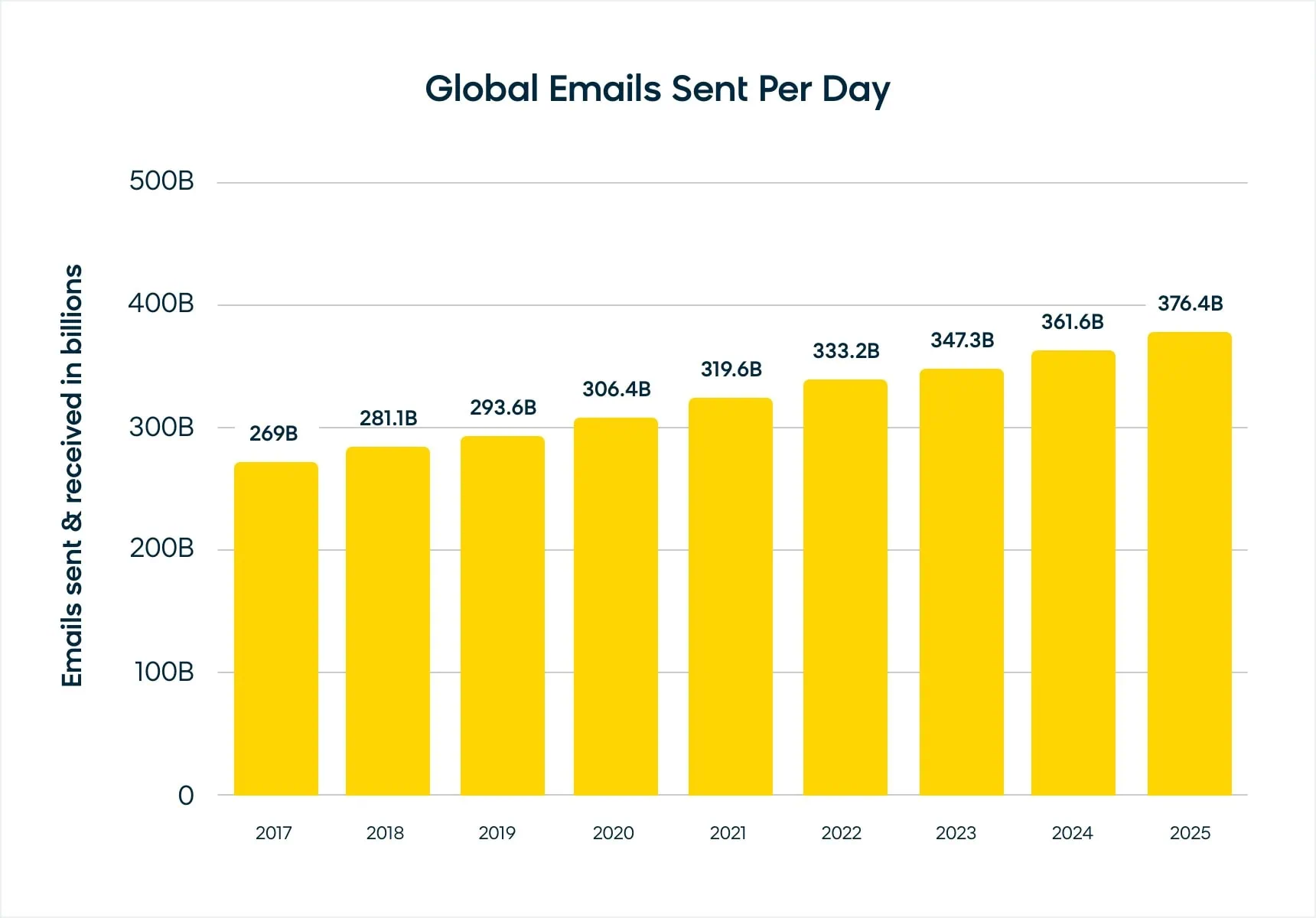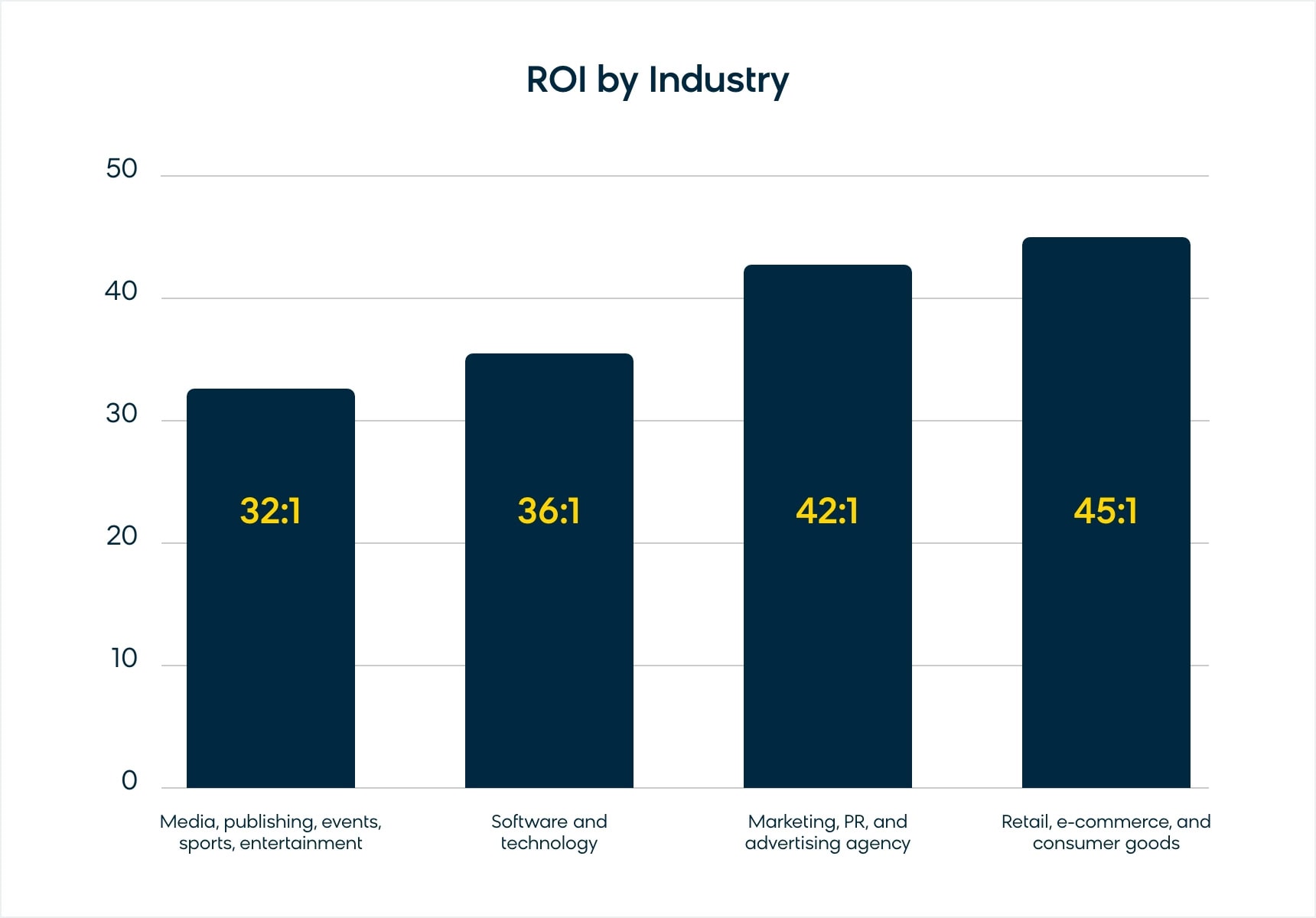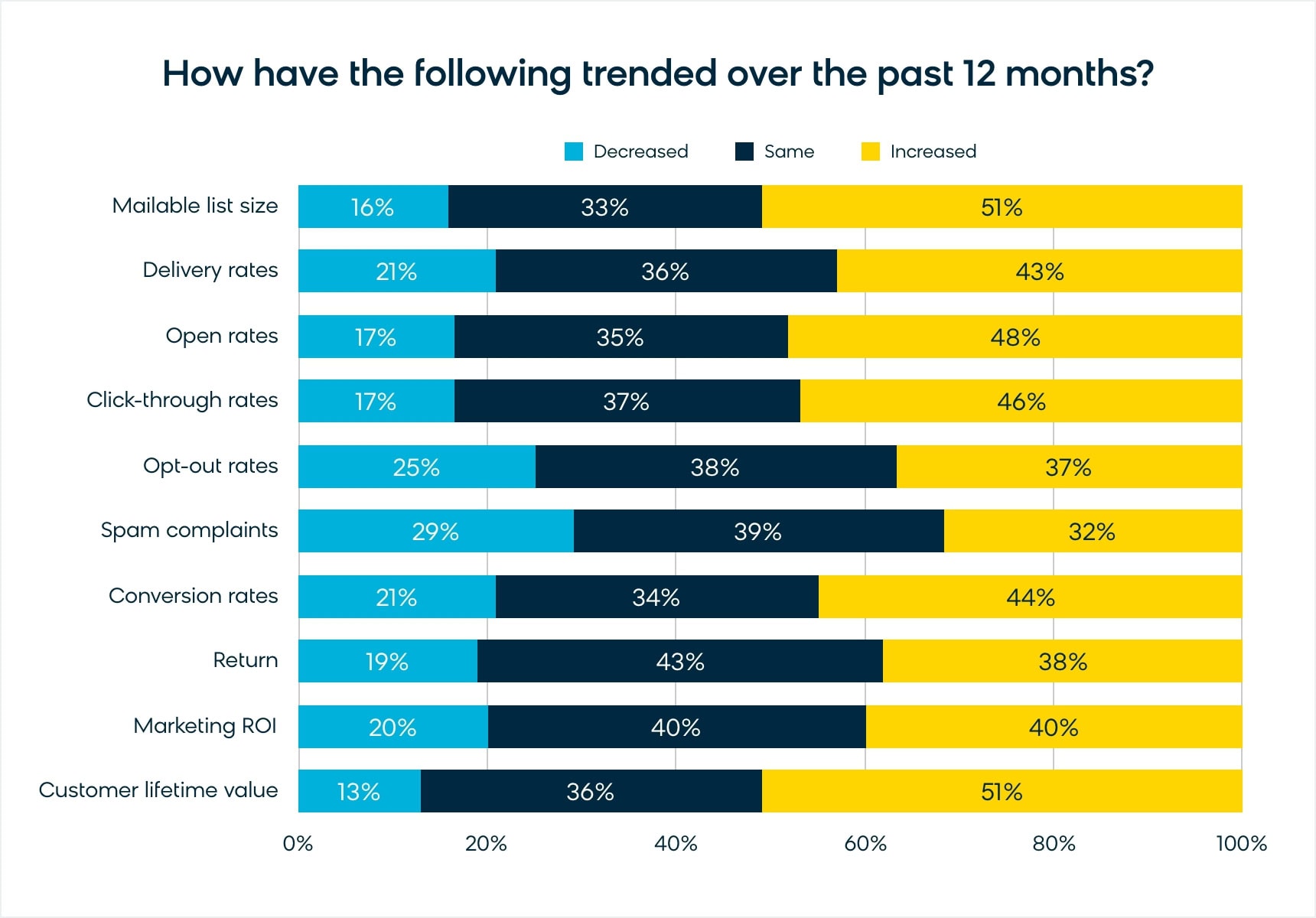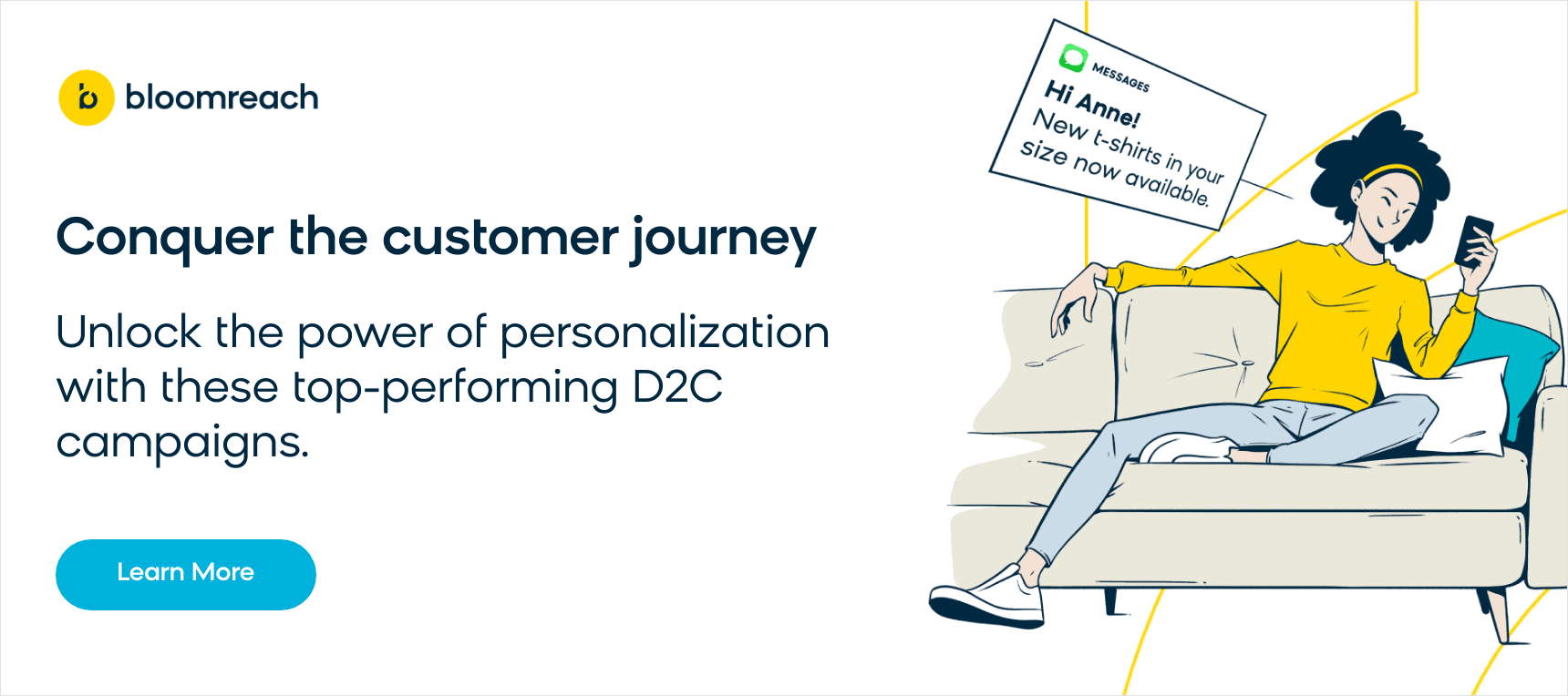Email marketing has long been praised as royalty amongst available digital marketing channels for ecommerce businesses.
But with the rise of so many new apps, ad types, and social networks, has the crown slipped for email as the king of digital marketing?
Well, it certainly had a wobble. Especially with the recent changes to Apple Mail’s Privacy Policy, which made the open metric an unreliable one.
But make no mistake, there is still no immediate threat to email’s reign as the top digital marketing channel. Almost every statistic out there (and there are many) points to the continued expansion in email usage, preference, and ROI. While mobile marketing is on the rise, email is still the unrivaled, unbeaten champion among digital marketing channels.
Ecommerce email marketing is the lifeblood of digital commerce companies across the globe. Let’s learn more.
What is Ecommerce Email Marketing?
Ecommerce email marketing is an email strategy used by ecommerce businesses to connect with potential and current customers with personalized communications designed to drive revenue. This email marketing strategy encompasses email marketing campaigns that meet customers where they are on their customer journeys with your brand and can be used to help predict future purchases or other future behavior with your company.
Whether its a welcome email, promotional emails, or other marketing messages, the purpose ecommerce email marketing is to keep ecommerce businesses top of mind with customers via email marketing strategies.
Ecommerce Email Marketing By The Numbers
Let’s start with the most basic statistic: the number of active subscribers per channel mentioned earlier. Below, we’ve mapped out the most popular channels accordingly.
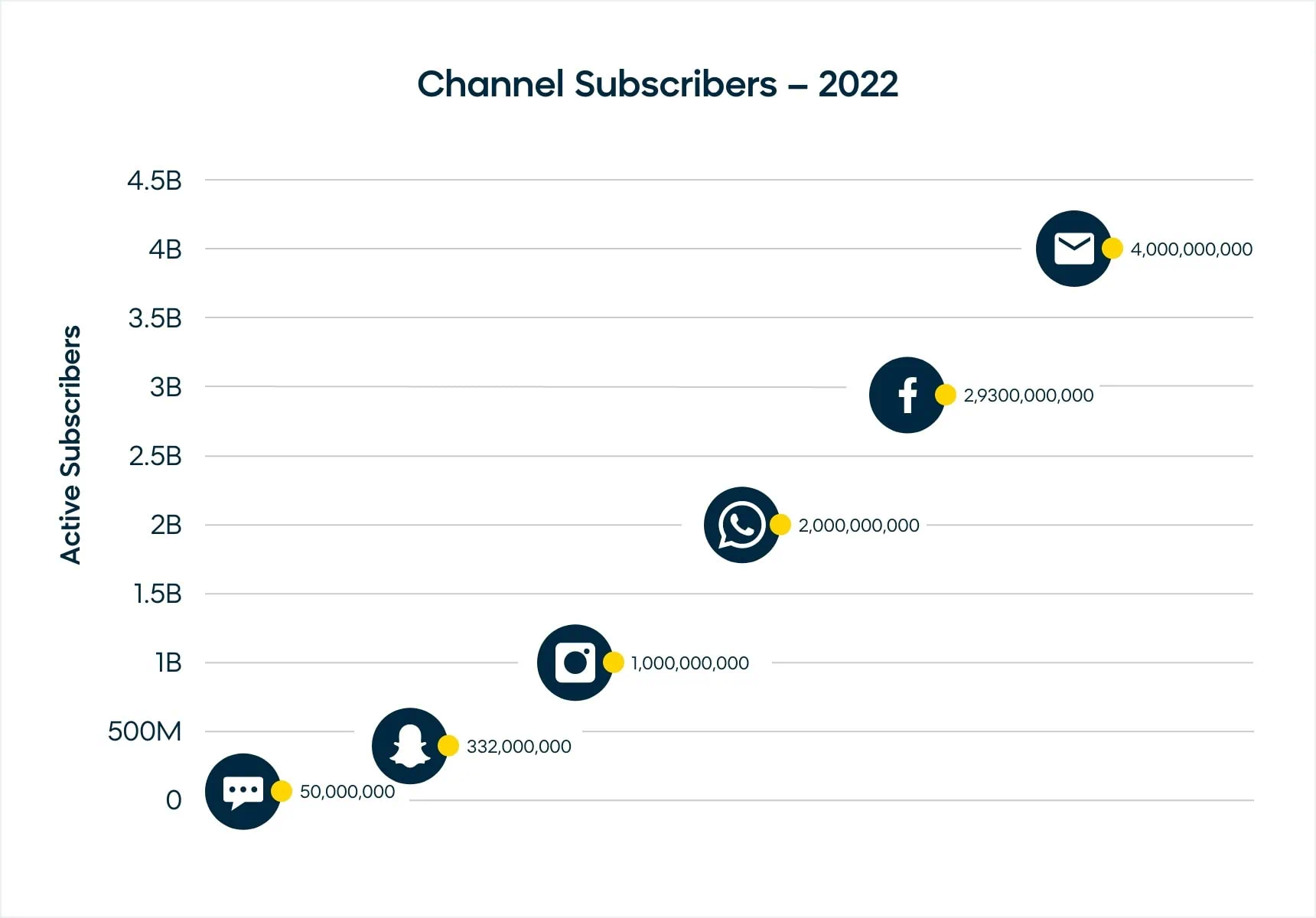
That’s right. There are four million users of email that could potentially become new subscribers, loyal customers, or repeat customers of your business thanks to email marketing.
If businesses want to reach mass audiences of customers, email has the widest reach by a large amount. More people are actively engaging with email compared to any other channel.
While there are some key trends making waves, such as customers under 25 preferring SMS as a means of communicating with businesses (although businesses have been very slow to pick up on this clear trend), email is still the most established channel — and this is why a good ecommerce email marketing strategy will always be essential to businesses.
Email is so much a part of the everyday lives of people that over half of the world’s population has an email address that they use daily. As long as you make your emails deliverable, they can be the most sure-fire way to reach the widest audience.
This dominance is nothing new. When we look at the global volumes of email sent per day, email hasn’t dropped in usage since its early and wide adoption in the 1990s. Fast forward to 2020 and the average daily volume of emails sent globally hit 306 billion per day. That grew by a phenomenal 4% in 2021 to hit 319 billion emails sent per day, and its growth shows no sign of slowing down. The number of emails sent globally per day is expected to rise to a whopping 376 billion by 2025.
Ecommerce Email Marketing Offers Incredible ROI
While the volume of users is important, that can’t be the only reason that email reigns supreme for your ecommerce store. So, why does email remain such a popular channel with marketers?
Again, the numbers speak for themselves — all of them. Email performance can be measured in many ways, but return on investment is always the first and foremost metric that marketers look for. According to Litmus, businesses on average are making $36 for every $1 spent on email marketing. Some sectors are doing even better, as the chart below shows:
And that’s not the only key performance indicator that email outperforms in. When the Direct Marketing Association (UK) questioned businesses on their email KPIs in 2021, a strong majority reported a healthy impact across all key metrics, with the same or an increased value over the past year.
As the chart above shows, email isn’t just leading the pack as the most influential marketing channel. It’s raising the bar year over year in the most important ways — none more so than customer lifetime value, with 51% of brands citing an increase in 2021.
Ecommerce Personalization and Ecommerce Email Marketing
An important consideration in today’s marketplace is how your brand can incorporate your ecommerce personalization strategies into your ecommerce email marketing.
Existing customers who have already engaged with your brand have the expectation that you are using the data you have collected on them to personalize their customer experiences. This includes sending personalized email campaigns to drive traffic to your online store.
If your email marketing software does not support personalizing customer communications, it may be time to consider making changes to better connect with your email subscribers or potential customers. Personalizing marketing emails can encourage customers to take key actions with your business and foster customer loyalty.
How specifically can you personalize your automated email campaigns? Consider using these three below strategies in your promotional emails.
- Send personalized automated newsletters — An automated welcome series for new customers will help them get acquainted with your brand and increase customer engagement. Using past purchase data — or other collected customer data — to personalize the newsletters will only foster better customer relationships and increase customer loyalty as your consumers understand that you know them better than other brands.
- Include personalized product recommendations in emails — Using data like previous browsing history on your website or previous purchase history, include personalized product recommendations in your emails to customers. This increases the odds of conversion and gives your customers a more personalized experience with your brand.
- Use automation to notify customers about a price drop — If you’ve collected data that shows 300 customers were interested in a particular product and didn’t purchase it, use that data to send them an email when that product goes on sale. You can even include an additional discount code in that email to encourage conversion. This shows you understand your customers.
These personalized messages can turn interested onlookers into paying customers and take your automated emails to the next level compared to your competitors.
Get the Most Out of Your Ecommerce Email Marketing With the Right Technology
So, besides all these stats, promising figures and ability to facilitate personalization, what does email have that other channels don’t? We know it outranks so many other channels, but how does it do this?
Above all else, email is a visual channel. Your email marketing tool allows for images, copy, gifs, videos — you name it, email can put it on display.
And with so many ways to illustrate your message, it’s easy to see why email beats out other channels. Whatever you can create for a display ad or a social feed, you can add it to an email campaign and deliver it directly to your audience’s inboxes.
Unlike other channels, email can be as dense or as punchy as you’d like. While there are best practices, there are no character limits or space restrictions.
An email may lead with a main content piece, or “hero” message, but secondary content isn’t unheard of in emails — and they can be just as effective.
It’s the closest brands truly get to a digital shop window. You can use it to drive home a single point, highlight a few key messages, or pack as much into it as you prefer.
The real crown jewel of email marketing is its ability to implement data-driven communication on a game-changing scale.
Every marketer knows that data is the key to any successful campaign, and email is one of the most valuable and versatile tools to plug your data into. With the right data and audience segments, you can tailor content for each customer and their specific needs.
From a reminder message highlighting a recently abandoned cart to a last-chance look at items they previously viewed, your emails can speak directly to every member of your audience. There really is no end to the variations you can execute.
Your capacity for personalized campaigns is only dependent on how integrated your email builder is with your data platform and how granular you want your messaging to be.
As the king of content marketing channels, your email campaigns should be checking all the boxes to hit the KPIs they are capable of. And dynamic, data-driven emails are easy to execute with Bloomreach Engagement.
Our platform does it all: Use our drag-and-drop editor to easily create eye-catching emails; fine-tune your campaigns with 1:1 personalization using our single-customer view; and scale your success effortlessly with automated product recommendations, optimal send times, and so much more.
Ready to see our platform in action? Schedule a personalized demo today to learn more.



